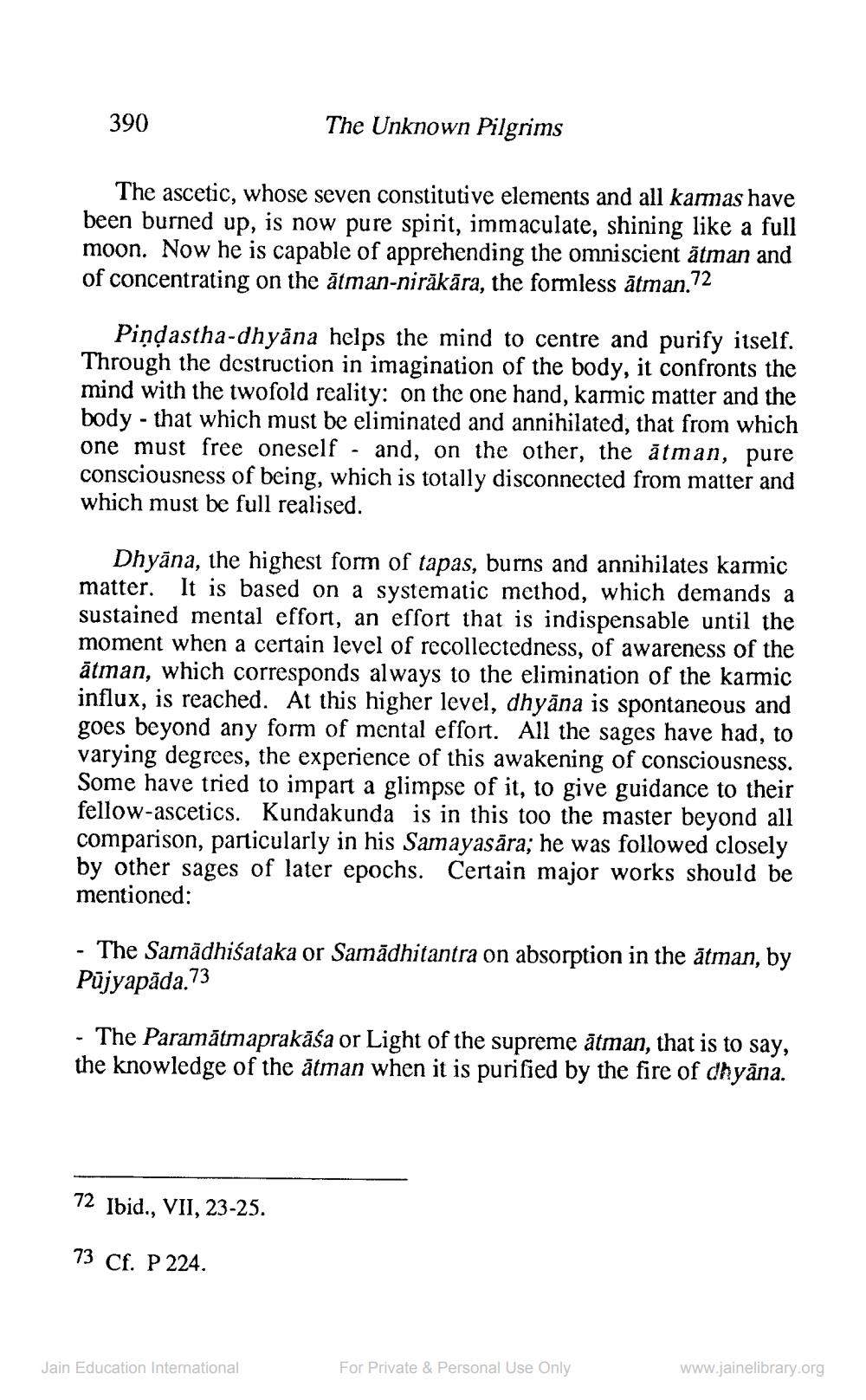________________
390
The Unknown Pilgrims
The ascetic, whose seven constitutive elements and all karmas have been burned up, is now pure spirit, immaculate, shining like a full moon. Now he is capable of apprehending the omniscient ātman and of concentrating on the ātman-nirākāra, the formless ātman.72
Pindastha-dhyāna helps the mind to centre and purify itself. Through the destruction in imagination of the body, it confronts the mind with the twofold reality: on the one hand, karmic matter and the body - that which must be eliminated and annihilated, that from which one must free oneself - and, on the other, the ātman, pure consciousness of being, which is totally disconnected from matter and which must be full realised.
Dhyāna, the highest form of tapas, burns and annihilates karmic matter. It is based on a systematic method, which demands a sustained mental effort, an effort that is indispensable until the moment when a certain level of recollectedness, of awareness of the ātman, which corresponds always to the elimination of the karmic influx, is reached. At this higher level, dhyāna is spontaneous and goes beyond any form of mental effort. All the sages have had, to varying degrees, the experience of this awakening of consciousness. Some have tried to impart a glimpse of it, to give guidance to their fellow-ascetics. Kundakunda is in this too the master beyond all comparison, particularly in his Samayasāra; he was followed closely by other sages of later epochs. Certain major works should be mentioned:
- The Samādhisataka or Samādhitantra on absorption in the ātman, by Pūjyapăda.73
- The Paramātmaprakāśa or Light of the supreme ātman, that is to say, the knowledge of the ātman when it is purified by the fire of dhyāna.
72 Ibid., VII, 23-25.
73 Cf. P 224.
Jain Education International
For Private & Personal Use Only
www.jainelibrary.org




